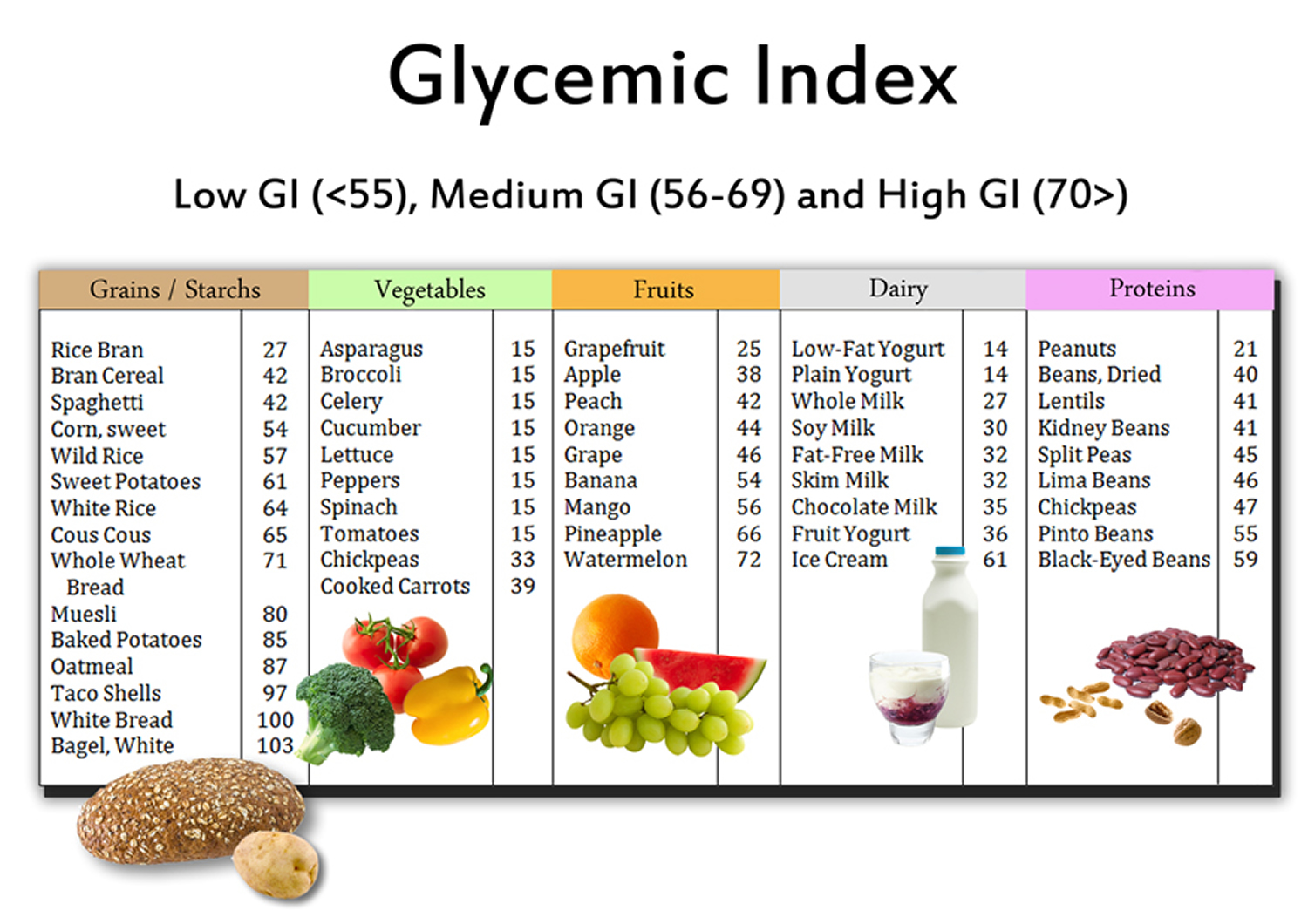
Glycemic Index Chart Printable
Our glycemic index chart of over three hundred foods and beverages has been collected by looking at all reliable sources available from researchers. The majority of our glycemic index values are taken from The International Tables of Glycemic Index Values. Others have been taken from smaller studies, researching specific foods.
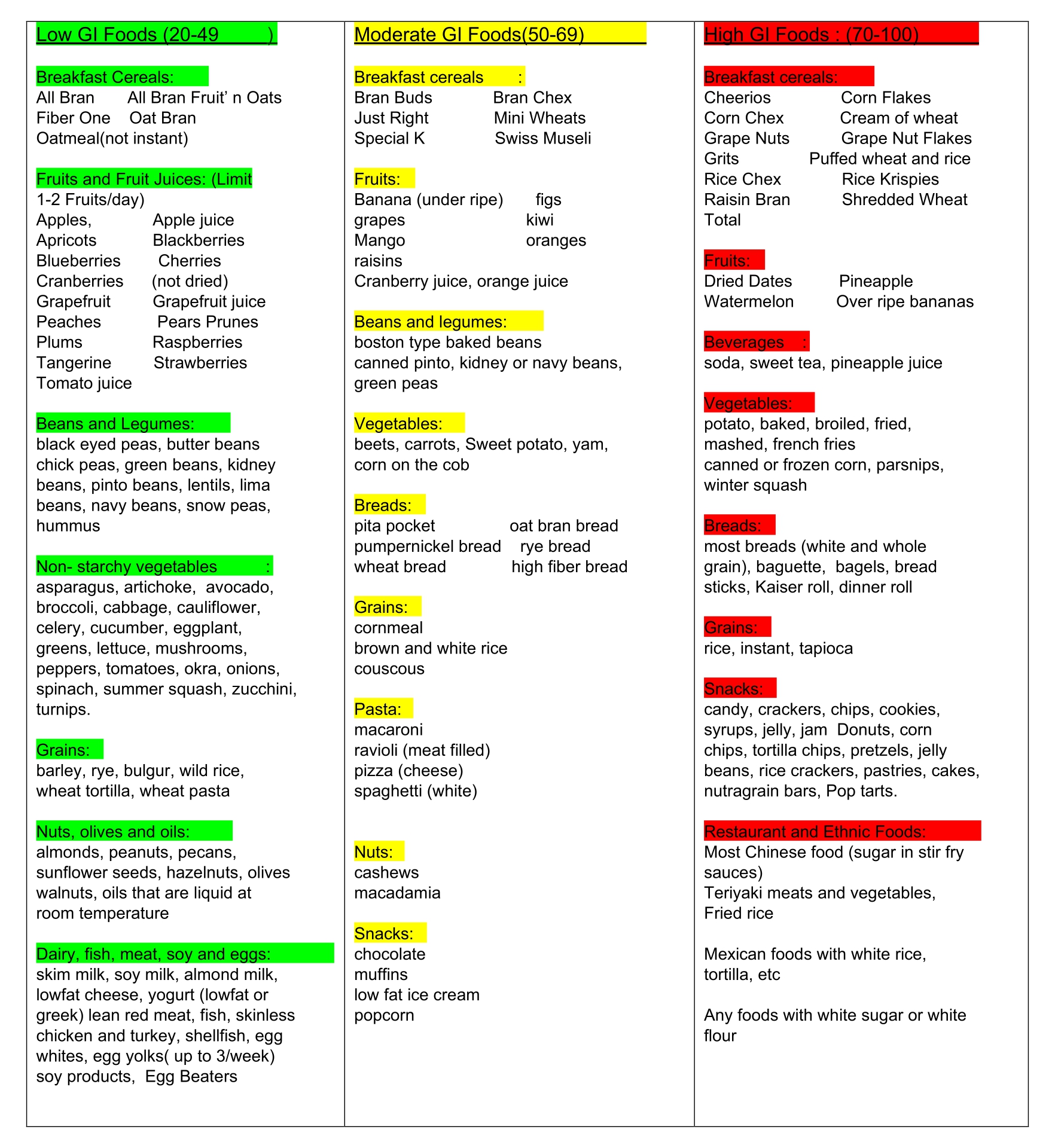
20 Best GI Of Food Chart Printable PDF for Free at Printablee
Glycemic index values were developed by a rigorous testing process using 10 or more people for each food. Researchers measured blood sugar levels of healthy volunteers before and two-hours after eating 50 grams of the same digestible carbohydrate (the test food).
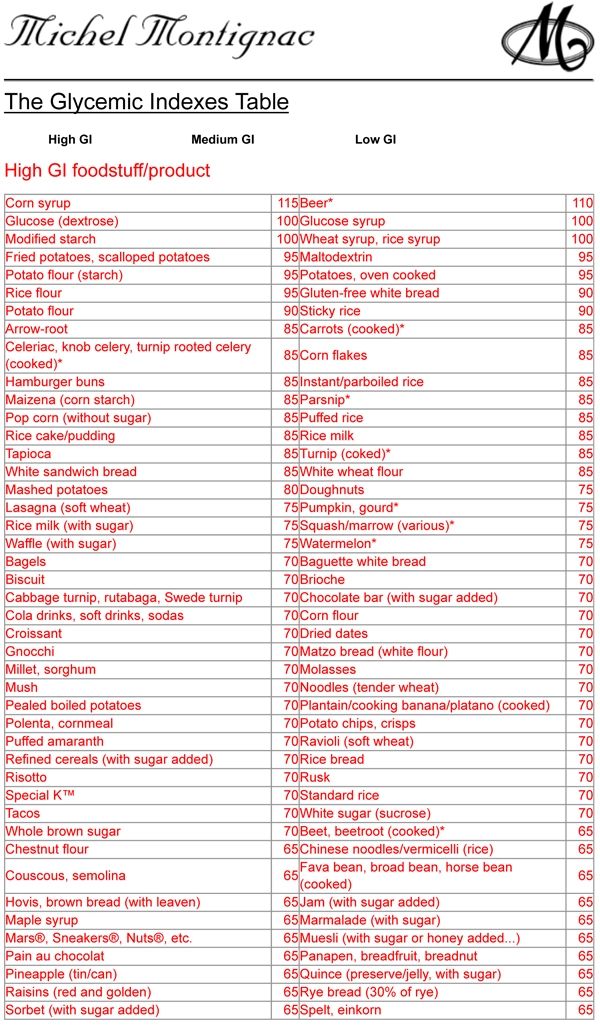
301 Moved Permanently
Pure glucose itself has a GI of 100. The general GI thresholds, per the American Diabetes Association (ADA), are: Low: 55 and below. Moderate: 56 to 75. High: 76 and above. Foods with a low GI.

Glycemic Matrix Guide to Low GI and GL Eating Glycemic Load
The glycemic index, or GI, uses a scale of numbers from 1 to 100 to rank carbohydrate foods by how quickly a serving size of each raises blood sugar. Why is this important? Because carbohydrates, or carbs, such as rice, pasta, bread, and fruit, raise blood sugar more, and more quickly, than fats or proteins do.

Glycemic Index Glycemic Load GIGL Food Chart
The glycemic index chart contains a list of foods along with a number ranging from 1 to 100. This number shows how much and how quickly your blood sugar will rise with each item. A food item with a high GI will be digested and burn energy faster while raising your level of blood sugar quickly.

Low glycemic carbs list Low Glycemic Food Chart List Printable of
Glycemic Index Food Guide Low Glycemic Index (55 or less) Choose Most Often Almond Milk Cow Milk (Skim, 1%, 2%, Whole) Frozen Yogurt Greek Yogurt Soy Milk Yogurt (Skim, 1%, 2%, Whole) Additional foods: 1. 2. 3. Medium Glycemic Index (56 to 69) Choose Less Often High Glycemic Index (70 or more) Choose Least Often Rice Milk Additional foods: 1. 2. 3.

Download Glycemic Index Chart for Free FormTemplate
The glycemic load is determined by multiplying the grams of a carbohydrate in a serving by the glycemic index, then dividing by 100. A glycemic load of 10 or below is considered low; 20 or above is considered high. Watermelon, for example, has a high glycemic index (80).
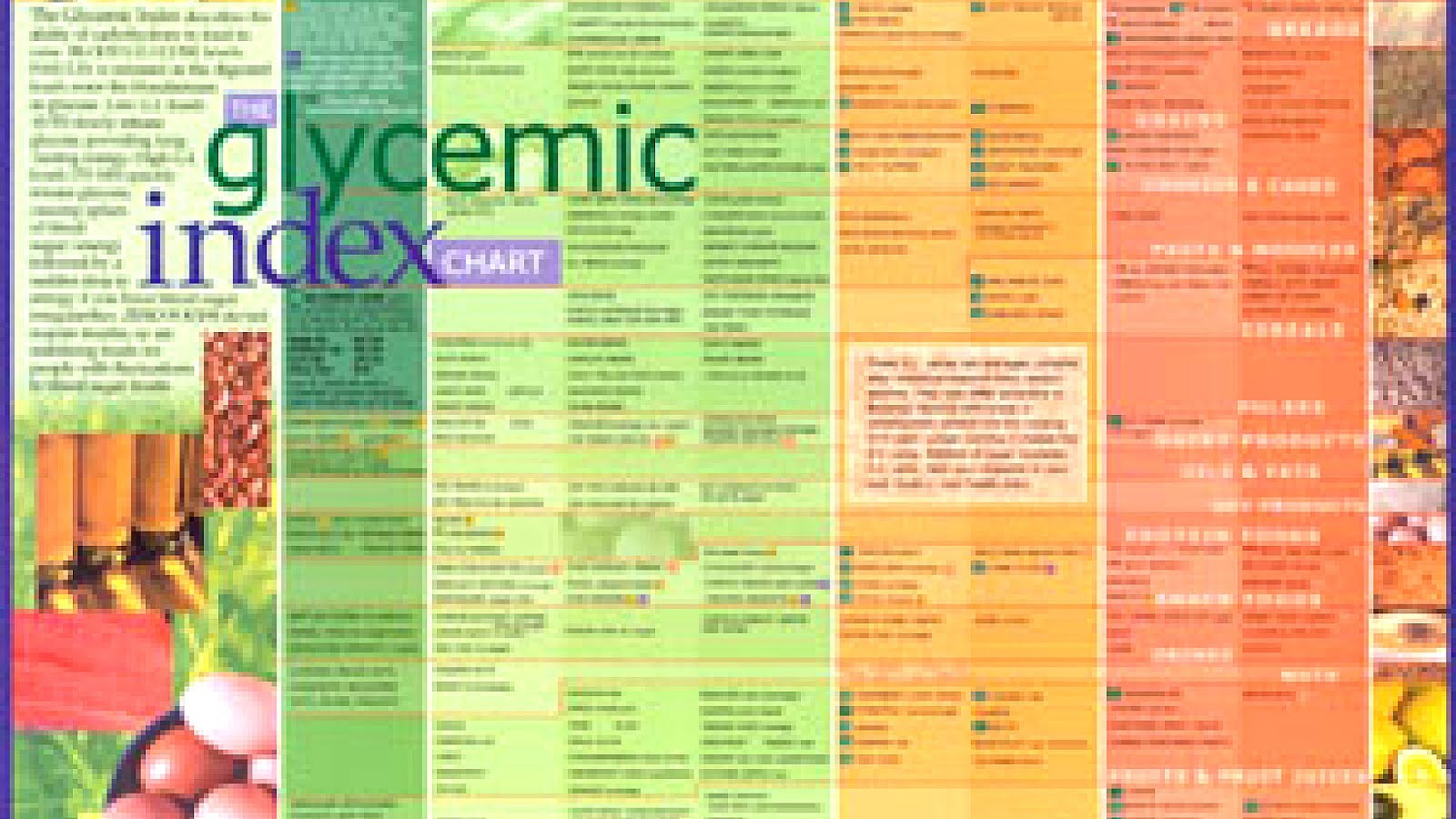
Fruit And Vegetable Glycemic Index Chart
The glycemic index classifies foods that contain carbohydrates according to their potential to raise blood sugar. Foods with high glycemic index values tend to raise blood sugar higher, faster and for a longer time than do foods with lower values.

Glycemic Index Diet and Diabetes
Glycemic index (GI) is a ranking system that measures how quickly carbohydrates in a food are broken down and absorbed into the bloodstream, causing a rise in blood sugar levels. The scale ranges from 0 to 100, with pure glucose having a GI of 100.
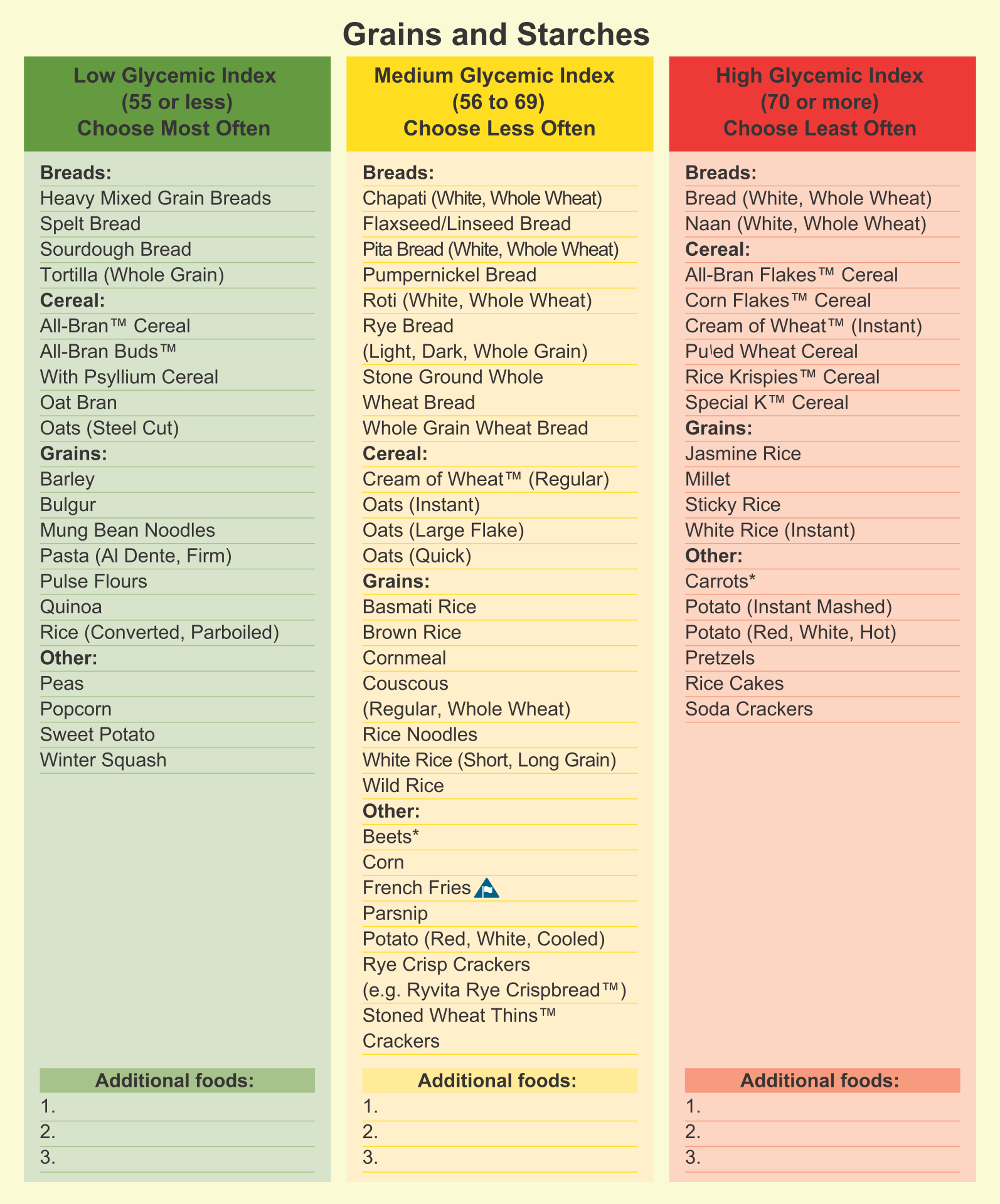
20 Best GI Of Food Chart Printable PDF for Free at Printablee
January 05, 2024 The glycemic index (GI) The glycemic index (GI) Diabetes Canada recommends people with type 1, type 2, or pre-diabetes choose lower glycemic index (GI) foods and drinks more often to help control blood sugar. The GI is a scale out of 100 that ranks a carbohydrate-containing food or drink by how much it raises your blood sugar.

Glycemic Index Chart 6 Free Templates in PDF, Word, Excel Download
The Glycemic Index (GI) chart shows how much and how quickly a carbohydrate-containing food raises your blood-sugar levels. The lower a food is on the GI, the lower the effect on your blood sugar. The standardized Glycemic Index ranges from 0 to 100. Zero-glycemic foods—those without carbohydrates—include items like meats, fish, and oils.

Printable Glycemic Index Chart Pdf Printable Chart
(GI) is a measure of how fast a food raises the blood sugar level. It is a sign of the quality of carbohydrates in the food. A low GI is a sign of better quality. Eating foods with a lower GI may result in a more gradual rise in your blood sugar level. The glycemic load (GL) adds the amount of carbohydrate (quantity) into the mix. It takes

Alfa img Showing > Glycemic Index Chart PDF Low glycemic index
The glycemic index considers the speed that carbohydrates turn into blood sugar, but the glycemic load (GL) addresses the amount of carbohydrates per serving of a food. High-GL foods will increase blood sugar and impact insulin levels. How do you determine the GL of a food?
Prince William glycemic index table
The glycemic index rates the effect of a specific amount of a food on blood sugar compared with the same amount of pure glucose. A food with a glycemic index of 28 boosts blood sugar only 28% as much as pure glucose. One with a GI of 95 acts like pure glucose. Glycemic index chart

17 Best images about Dealing with Diabetes on Pinterest Beans, Food
The Glycemic Index (GI) Chart for Carbohydrates FRUITS: GI RATING GI TYPE Apple 39 Low G.I Apple Juice 40 Low G.I Apricots 57 Med G.I Banana 54 Low-Med G.I Cantaloupe Melon 65 Med-High G.I Cherries 22 Low G.I Grapefruit 25 Low G.I Grapefruit Juice 48 Med G.I Grapes 46 Low-Med G.I Kiwi Fruit 52 Med G.I Mango 56 Med G.I
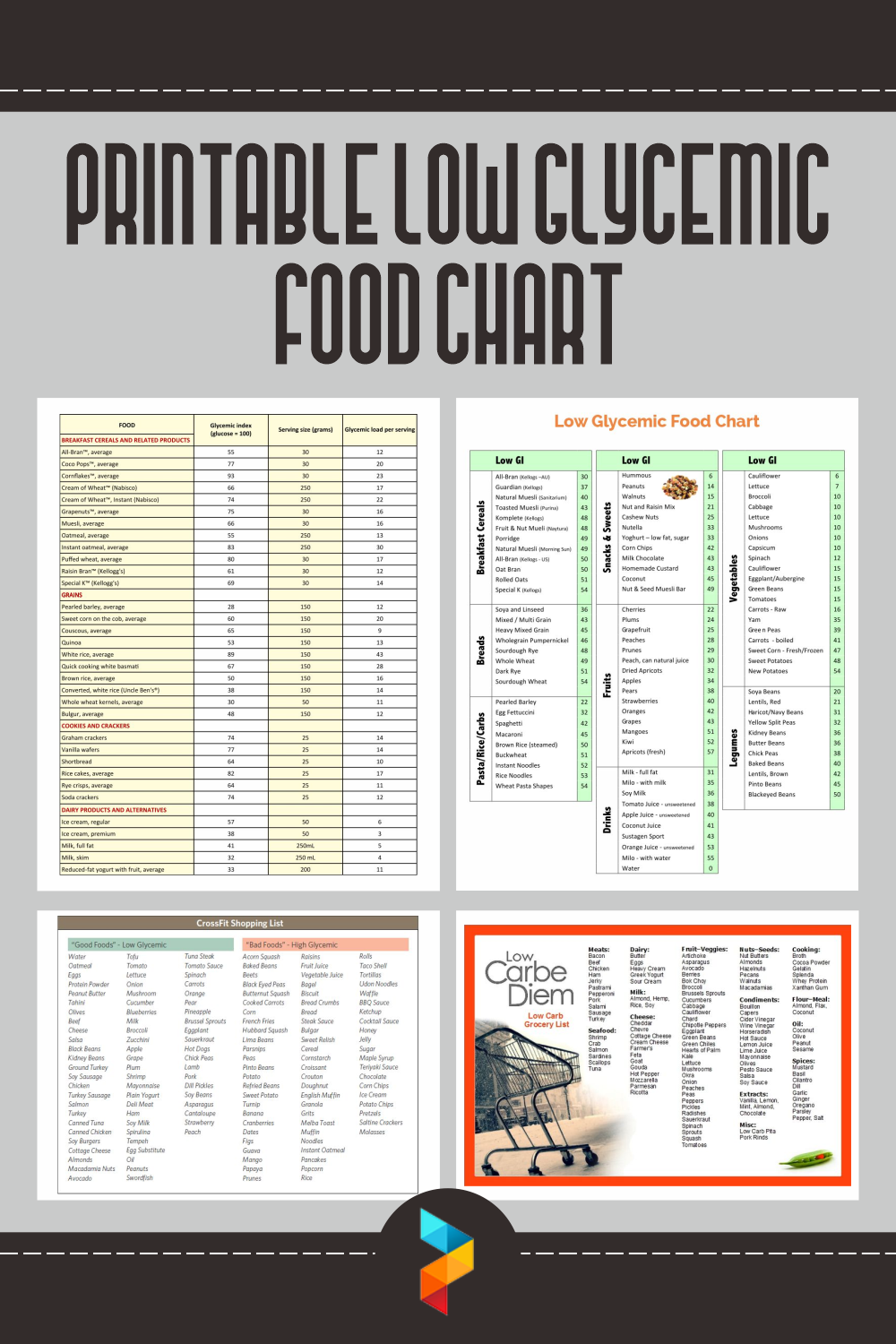
Printable Glycemic Index Chart Pdf 05/2022
By Mayo Clinic Staff A low-glycemic index (low-GI) diet is an eating plan based on how foods affect blood sugar level, also called blood glucose level. The glycemic index ranks food on a scale from 0 to 100. The low end of the scale has foods that have little effect on blood sugar levels.